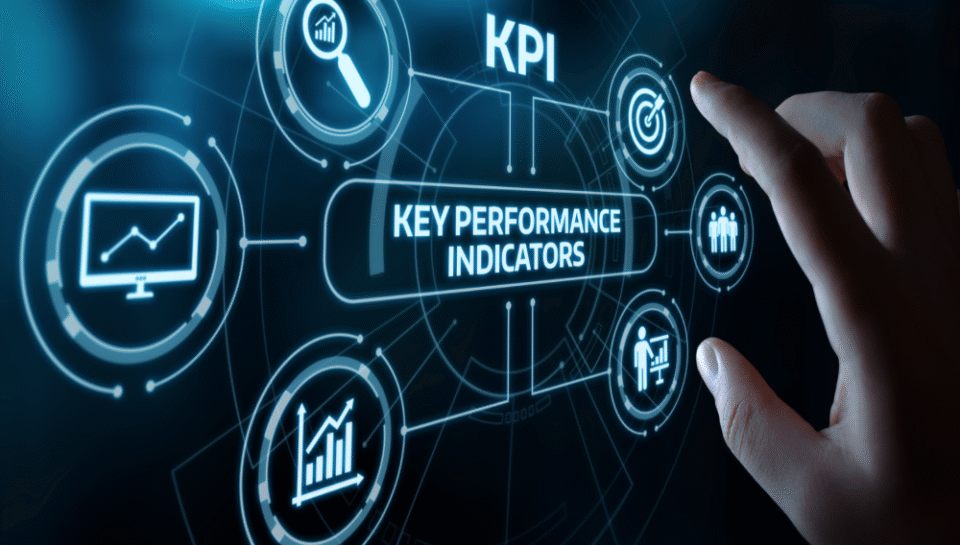
Establish key performance indicators in digital marketing
Introduction
In digital marketing, success is defined by measurable outcomes. Key performance indicators (KPIs) serve as benchmarks that help marketers evaluate campaign effectiveness, optimize strategies, and align activities with business objectives. Unlike vanity metrics that may reflect activity without impact, KPIs offer actionable insights into the performance and return on investment (ROI) of marketing efforts. For organizations across sectors—especially in data-driven environments like IT and e-commerce—establishing the right KPIs is essential for scaling operations, improving targeting, and maintaining consistent growth. These indicators not only guide performance evaluation but also foster accountability and strategic agility.
Website traffic and user behavior metrics
Website traffic is a foundational KPI that reflects the volume of visitors reaching a business’s digital touchpoints. Tools like Google Analytics track metrics such as sessions, users, page views, average session duration, and bounce rates. These indicators help marketers assess the effectiveness of inbound channels, content appeal, and user engagement. For example, a high bounce rate may signal poor user experience or content mismatch, prompting the need for optimization. Regular monitoring of traffic trends provides visibility into campaign reach and site performance.
Conversion rate performance
Conversion rate is a core KPI that tracks the percentage of users completing desired actions—such as filling a form, downloading a resource, or making a purchase. This indicator provides direct insight into how well a marketing campaign or landing page persuades users to take action. A low conversion rate, despite high traffic, typically signals issues in the sales funnel or messaging. Tracking conversions across different campaigns and audience segments helps identify what drives outcomes and where improvements are needed.
Cost per acquisition and cost per click
Cost per acquisition (CPA) and cost per click (CPC) are critical KPIs for evaluating paid digital campaigns. CPA measures how much it costs to acquire a new customer, while CPC assesses the cost efficiency of attracting a single click through paid channels like Google Ads or social media. Lowering CPA and CPC without compromising lead quality is a key goal for digital marketers. These KPIs inform budgeting decisions and campaign optimization by revealing the return on advertising spend (ROAS).
Click-through rate as an engagement indicator
Click-through rate (CTR) measures the percentage of users who click on a link or advertisement after viewing it. It is a useful KPI for evaluating how compelling an ad, subject line, or call-to-action is. A high CTR suggests relevance and resonance with the audience, while a low CTR may prompt marketers to revise creatives, offers, or targeting criteria. CTR is especially important in email marketing, search engine marketing, and social campaigns.
Customer lifetime value as a long-term metric
Customer lifetime value (CLTV or LTV) estimates the total revenue a business can expect from a customer over the duration of their relationship. This KPI shifts focus from short-term gains to long-term brand loyalty and profitability. Marketers use CLTV to prioritize high-value customer segments, tailor retention strategies, and inform budget allocation across acquisition and engagement initiatives. Increasing CLTV typically involves improving user experience, upselling, and building brand trust.
Return on investment and return on ad spend
Return on investment (ROI) and return on ad spend (ROAS) are essential metrics for evaluating the profitability of marketing efforts. ROI measures the overall return relative to the total marketing investment, while ROAS specifically assesses revenue generated per dollar spent on advertising. These KPIs help decision-makers determine which strategies are delivering real financial value. A positive ROI indicates effective marketing alignment with business objectives, while a negative ROI signals the need for strategic reevaluation.
Email marketing performance metrics
Email marketing remains a powerful digital tool, and its performance is tracked using KPIs like open rate, click-through rate, unsubscribe rate, and bounce rate. These indicators help marketers understand how well email content engages the audience and maintains list health. High open and click-through rates signal compelling subject lines and valuable content, while high unsubscribe or bounce rates may suggest audience fatigue or list management issues.
Social media engagement and reach
On social platforms, key KPIs include engagement rate (likes, comments, shares), reach, follower growth, and impressions. These metrics indicate how effectively a brand connects with its audience and how content performs in terms of visibility and interaction. Engagement rates are particularly important for assessing brand awareness and community building. Social media analytics tools like Sprout Social or Meta Business Suite provide detailed performance insights across platforms.
Lead quality and lead-to-customer ratio
Not all leads are equal, and tracking lead quality is crucial to optimizing conversion efforts. The lead-to-customer ratio compares the number of leads generated to the number of customers acquired. This KPI evaluates how well the sales funnel nurtures and converts potential clients. High lead volumes with poor conversion may point to misaligned targeting or messaging gaps. Monitoring lead quality helps improve alignment between marketing and sales and ensures better ROI.
Conclusion
Establishing and monitoring key performance indicators in digital marketing enables organizations to move beyond assumptions and base decisions on measurable outcomes. Whether it’s optimizing ad spend, improving user engagement, or increasing customer retention, KPIs provide a strategic framework for growth. The right set of indicators helps digital marketers remain agile, transparent, and performance-oriented. By focusing on KPIs that reflect both short-term actions and long-term value, businesses can refine their marketing strategies, deliver better customer experiences, and consistently achieve their goals in an ever-evolving digital landscape.
Hashtags
#digitalmarketing #marketingkpis #performancemetrics #conversionrate #webanalytics #customerlifetimevalue #marketingroi #roas #leadgeneration #userengagement #emailmarketing #socialmediametrics #contentperformance #paidads #seoanalytics #clickthroughrate #acquisitioncost #datadrivenmarketing #marketingstrategy #digitalgrowth #funneloptimization #customerretention #brandingkpis #adspendanalysis #campaignmonitoring





